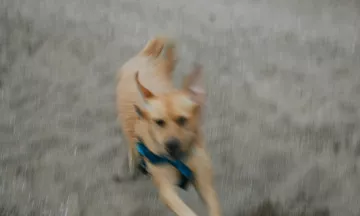It's Rabbit Awareness Week soon (17th - 25th of June)! Before hopping into bunny-sitting on Pawshake, here are the basics that you need to know. Always meet and greet with the owner as they will go over a lot of important information, but as a Pawshake sitter it’s essential to be confident and knowledgeable well in advance of the booking.

Note that rabbits can get super stressed if they are moved from their home environment, so we really recommend home visits as the ideal service to care for them. However if circumstances mean that the rabbit has to stay with you (say if the owner is moving home) then your bunny knowledge is even more important!
1 Rabbits need space and exercise.
Rabbits need daily exercise and may need to be let out of their hutch to hop about freely (unless the owner advises otherwise, say if the hutch is a massive bunny mansion!). Take this into account when you’re planning your visit.
2 Rabbits chew. Everything.
Rabbit proofing is SO essential for the safety of a bunny…and for the preservation of furniture!
If you are visiting, you can ask if there is a rabbit-proofed room for bunny to explore. Whether this is the case or a rabbit is coming to stay with you, be aware that they are born nibblers – so all furniture legs, rug edges, cords, cables, cleaning products, clutter and houseplants should be elevated or contained. Even room edges with skirting boards should be protected with plastic guards. And always keep doors closed when a bunny is out and about.
3 Rabbits can be territorial.
It isn’t advisable to keep multiple rabbit clients together in one space, as there is a chance they may not get along – and we don’t want any injuries! And definitely keep your rabbit guest away from all other pets you own or are pet sitting.
Note that rabbits are very social creatures that can benefit from a long-term bunny companion, so you might find they can often come in pairs or trios.
4 Rabbits use a litter tray.
Rabbits are critters of habit that, with training, will use a litter tray. The whole tray should be cleaned daily, including the straw - which the rabbit will nibble on while they do their business.
Make sure the rabbit’s owner leaves plenty of supplies and instructions in case you need to top up – ideally a natural, paper-based litter should be spread thinly in the tray (never clay-based, wood-based or clumping litter) and then topped with rabbit hay.
A rabbit might go beside their litter tray, which is totally normal – they aren’t always 100% on target! If you see an accident, just wipe it up and pop any stray droppings into the litter tray until the next clean out.
5 Rabbits need to be handled super carefully.
This is one of the main reasons that, despite perceptions of bunnies being fluffy toys, they aren’t ideal pets for small children
Rabbits have fragile little spines that can fracture really easily – so be sure to handle a rabbit carefully. Pick them up gently by cupping under their hindquarters and chest and hold them securely to your body.
A rabbit can be injured if it struggles from your arms while you’re holding it – if there is unexpected wiggling, hold the rabbit firmly and place it gently on the ground. If the rabbit doesn’t want to be held in the first place, leave it on the ground where it’s happy!
6 Rabbits should be regular!
If a rabbit hasn’t used it’s litter tray in 12 hours – call a vet. Their sensitive stomachs can be susceptible to blockages and other issues, so time is of the essence. Be observant!
7 Rabbits need a rabbit vet.
As with ALL your pet sitting clients on Pawshake, make sure you get the contact details of their regular veterinary clinic. All files will be on hand and they will be confident in dealing with issues specific to rabbits. If the regular vet is unavailable, make sure the alternative vet is knowledgeable about rabbit care.




